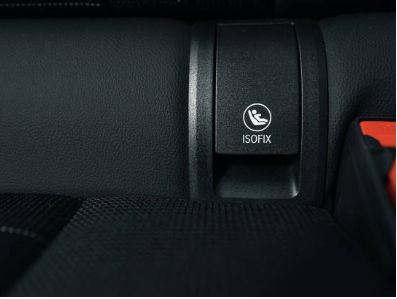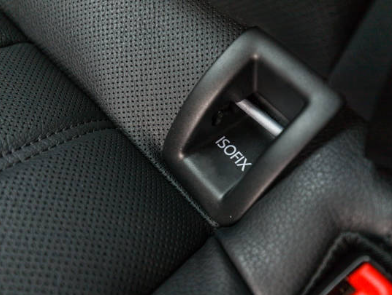What is ISOFIX?
ISOFIX stands for ‘International Standard Organisation Fix’ and it's the best way of ensuring your baby or child seat is fitted correctly and securely to your car.
ISOFIX uses anchor points in the seats that are fixed to the car's shell to ensure the seat is 100% secure rather than holding it in place with the seat belt.
It is mandatory for car manufacturers to have ISOFIX because not only does it make it easier to fit a child seat to your car but it is also safer and caters to baby and child seats of different ages.
When did ISOFIX become mandatory?
ISOFIX has been fitted to some cars since November 2012, however, all new cars from November 2014 will have it fitted. If you are looking at older cars, I would suggest checking if it has ISOFIX first if it’s something you require as a lot of older cars might have it but it’s not guaranteed.
If you're buying a used car, check the seats for the ISOFIX logo – usually on a label, tab, or plastic cover hiding the anchor points – to be sure it has them fitted. Two-seater sports cars are the only exception though models like the Porsche Boxster and Mazda MX-5 now also come with ISOFIX fittings on their front passenger seat. ISOFIX seats are designed for a small range of ages which is newborns up to four-year-olds.
How do ISOFIX seats work?
ISOFIX child seats have metal jaws that anchor onto the ISOFIX points in your car. You open the jaws, line them up in the ISOFIX points and push them together, you'll hear a click as the jaws close, locking themselves onto the anchor points. It’s like a seatbelt for the baby/child seat but a lot safer and easier to use. Releasing the seat is typically much easier, with a single button on the mounting.
Why were ISOFIX seats invented?
The ISOFIX seat system was invented so that parents can ensure that any child or baby seats are that fitted into the car are secured correctly. Numerous studies found that the older-style seats, which were secured using the seatbelt, were usually fitted incorrectly: For example, one study carried out by the German Insurance Institute, found that 95% of ISOFIX child seats were fitted correctly without much instruction, compared to just 30% using the old system that most of the people had used before. Safety comes first.
Can I use seat belts rather than learn how to use ISOFIX?
If you know that your seatbelt-fitted seats are fitted correctly then they are just as safe. Seatbelt or ISOFIX, as long as it’s done right you won’t have any issues. However, in a lot of instances, many people aren’t 100% sure of the correct way to secure a baby/child seat with seatbelts, and that’s when you can run into trouble.
With ISOFIX mounts, the connection between the seat and the car is a lot more rigid, so there’s way less of a chance of making a mistake when fitting a child/baby seat into the car. However, in saying that, it’s not a legal requirement to have an ISOFIX seat.
Is ISOFIX universal?
No, it’s not. A lot of manufacturers will use the same ISOFIX positionings however you have three types of ISOFIX seats – universal, semi-universal, and vehicle specific.
The names pretty much describe the description.
- Universal seats should fit all new cars and they have either a top pully device that you secure to the back of a passenger seat, it could have a supporting leg that you wedge in the footwell, or it could well be both to make sure the seats securely fitted.
- Semi-universal seats have the same setup but as the name suggests, they might not fit all makes and models of cars. So, I would check with your vehicle brand to make sure.
- Vehicle-specific seats are… specific to certain makes and models of cars. So, check on this one.
Just to keep your mind at ease as well, almost all ISOFIX seats have green and red indicators to show you when the seat is fitted into the car correctly. Add in a rebound bar and extra leg support or top tether strap and the ISOFIX system feels incredibly secure. As an added bonus booster seats can also be permanently secured with ISOFIX system as well so you know your child isn’t sliding around the car.
So, the conclusion is: If you know how to do a safe and secure seatbelt fastening on the baby/child seats then that is just as safe, however, if you want the ease of just securing the seat and knowing its safe, then you can always check which ISOFIX positionings your car has and secure the seats accordingly.



Written by Isabelle Davey




